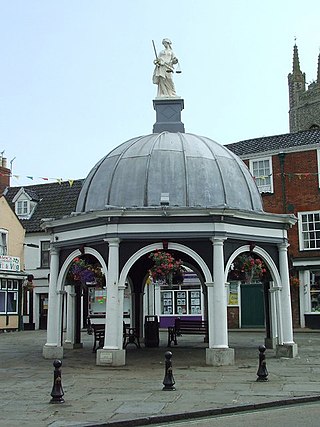
Bungay is a market town, civil parish and electoral ward in the English county of Suffolk. It lies in the Waveney Valley, 5+1⁄2 miles west of Beccles on the edge of The Broads, and at the neck of a meander of the River Waveney.

Swaffham is a market town and civil parish in the Breckland District and English county of Norfolk. It is situated 12 miles east of King's Lynn and 31 miles west of Norwich.

Littleport is a village in East Cambridgeshire, in the Isle of Ely, Cambridgeshire, England. It lies about 6 miles (10 km) north-east of Ely and 6 miles (10 km) south-east of Welney, on the Bedford Level South section of the River Great Ouse, close to Burnt Fen and Mare Fen. There are two primary schools, Millfield Primary and Littleport Community, and a secondary, Vista Academy. The Littleport riots of 1816 influenced the passage of the Vagrancy Act 1824.

The Bishop of Norwich is the ordinary of the Church of England Diocese of Norwich in the Province of Canterbury. The diocese covers most of the county of Norfolk and part of Suffolk. The bishop of Norwich is Graham Usher.
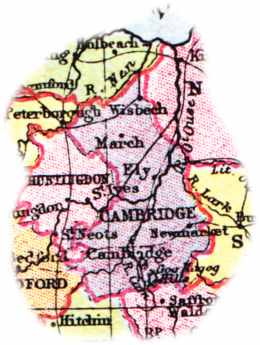
The English county of Cambridgeshire has a long history.
This article describes the history of Suffolk, the English county.

A hellhound is a mythological hound that embodies a guardian or a servant of hell, the devil, or the underworld. Hellhounds occur in mythologies around the world, with the best-known examples being Cerberus from Greek mythology, Garmr from Norse mythology, the black dogs of English folklore, and the fairy hounds of Celtic mythology. Physical characteristics vary, but they are commonly black, anomalously overgrown, supernaturally strong, and often have red eyes or are accompanied by flames.

Walstan was an Anglo-Saxon prince, known for the miracles which occurred during and after his life after he became a farm worker. He is a patron saint of farm animals and agricultural workers, who once visited his shrine at the church at Bawburgh, in the English county of Norfolk. Two sources for his life exist: the De Sancto Walstano Confessore in the Nova Legenda Angliæ, printed by Wynkyn de Worde in 1516, and known as the English Life; and a later Latin manuscript copied in 1658 from a now lost medieval triptych, now in the Lambeth Palace library in London.

Beeston Regis is a village and civil parish in the North Norfolk district of Norfolk, England. It is about a mile (2 km) east of Sheringham, Norfolk and near the coast. The village is 2 miles (3 km) west of Cromer and 16 miles (26 km) north of the city of Norwich. According to the 2011 census, it had a population of 1,062. There is a frequent bus service on the coast road A149 and a rail service from the nearby stations of Sheringham to the west and West Runton to the east, where the Bittern Line runs a frequent service between Norwich, Cromer and Sheringham. The nearest airport is Norwich International Airport.

The black dog is a supernatural, spectral, or demonic hellhound originating from English folklore that has also been seen throughout Europe and the Americas. It is usually unnaturally large with glowing red or yellow eyes, is often connected with the Devil, and is sometimes an omen of death. It is sometimes associated with electrical storms, and also with crossroads, barrows, places of execution and ancient pathways.
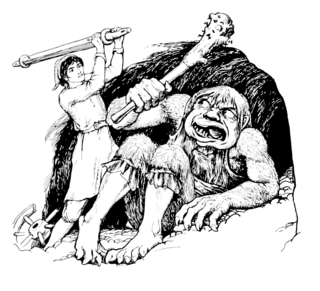
Tom Hickathrift is a legendary figure of East Anglian English folklore — a character similar to Jack the Giant Killer. He famously battled a giant, and is sometimes said to be a giant himself, though normally he is just represented as possessing giant-like strength.
The Blois family have been substantial landowners in Suffolk for several centuries. Until recently the family home was at Cockfield Hall in Yoxford, Suffolk, a Grade 1 listed private house standing in 40 acres (160,000 m2) of historic parkland.

Blythburgh Priory was a medieval monastic house of Augustinian canons, dedicated to the Blessed Virgin Mary, located in the village of Blythburgh in Suffolk, England. Founded in the early 12th century, it was among the first Augustinian houses in England and began as a cell of St Osyth's Priory in Essex. Although it acquired a conventual life of its own, its community was always small and in some respects maintained dependency upon the parent house. It was earmarked for closure by Cardinal Wolsey during the late 1520s but survived his fall and continued until dissolution in 1536.
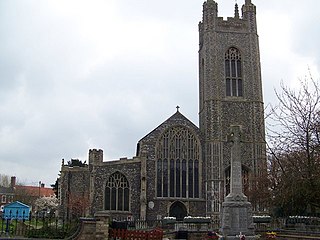
St Mary's Church is a redundant Anglican church in the town of Bungay, Suffolk, England. The church and the ruins of the adjacent priory are recorded in the National Heritage List for England as a designated Grade I listed building, and are under the care of the Churches Conservation Trust. The church stands in the centre of the town on St Mary's Street, the A144 road.

Sir Robert Brooke was an English landowner, magistrate, commissioner, administrator and MP who sat in the House of Commons between 1624 and 1629. He made his country seat at Cockfield Hall, Yoxford, Suffolk.

The Holy Trinity Church is the parish church of the village of Blythburgh in the East Suffolk district, in the county of Suffolk, England. It is part of the Church of England Halesworth deanery in the Diocese of St Edmundsbury and Ipswich, and has been listed Grade I on the National Heritage List for England since December 1966.
Down I Go are an experimental hardcore band from London.
A lantern man is an atmospheric ghost light described in the folklore of The Fens of East Anglia, with sightings around Wicken Fen and other areas. According to the stories, first collected by folklorist L.F. Newman, the lights are believed to be evil spirits who attempt to draw victims to their death in the reed beds. Newman writes that the spirits are attracted by the sound of whistling, and that a way to evade them is to lie face down on the ground with your mouth in the mud. The phenomenon, which seems to be a variation of will-o'-the-wisp folklore, is now dismissed as sightings of combustible marsh gas.
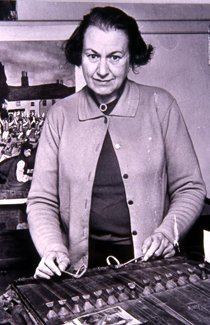
Enid Mary Porter was a collector of folklore in Cambridgeshire and the longest serving curator of the Cambridge & County Folk Museum, now the Museum of Cambridge, working from 1947 to 1976. Her work was invaluable in recording the cultural and social practices of people in Cambridgeshire; she was innovative in the discipline of social history collection, employing working practices such as oral history, and engaging with people in areas that had previously been overlooked by folklorists. Her notebooks, now in possession of the Museum of Cambridge, hold a treasure-trove of information about Cambridgeshire customs, stories and songs.

Sir Edward Echyngham, , of Barsham and Ipswich in Suffolk, was a commander on land and at sea, briefly Constable of Limerick Castle, and Collector of Customs at Ipswich. He is remembered as the author of a letter to Cardinal Wolsey describing the death of Lord Admiral Howard at Brest in 1513. From 1485 the presence of the Howard Dukes of Norfolk was felt directly along the Barsham reach of the River Waveney from their possession of Bungay Castle.


















